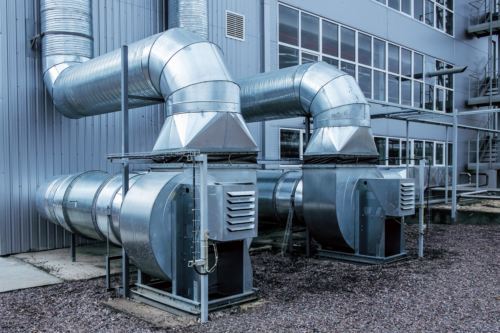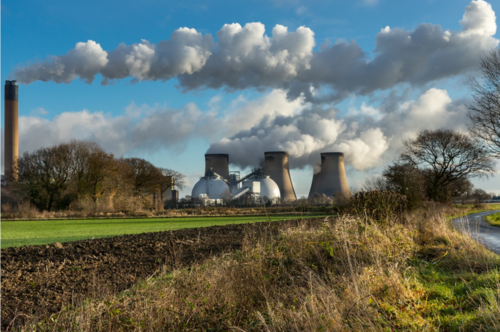What can healthcare professionals do to help reduce indoor air pollution and the subsequent transmission of viruses?
Monitoring indoor air quality (IAQ) should be first on your list – when you know what’s in the air you breathe you can take action to improve it. It is advised that IAQ sensors should monitor a number of key pollutants and not just CO2.
Whilst high levels of CO2 indicates that a room needs additional ventilation, there are other pollution elements that should be addressed, and which may become regulated in the near future. In fact, in September the World Health Organisation (WHO) adjusted almost all of its air quality guidelines downwards, slashing recommended safe limits in some cases by 75%, and warning that exceeding the new levels would pose significant risk to health. Poor air quality especially Particulate Matter (PM1 and PM2.5) has the ability to penetrate our lungs and cause respiratory and cardiovascular morbidity and disease.
Recent studies of COVID-19 in several countries have identified links between air pollution and death rates, and more recent research has concluded that a small increase in air pollution leads to a large increase in the COVID-19 infectivity and mortality rate in England.
The award winning Airthings sensors monitor multiple air pollutants in addition to CO2 allowing building occupants to tackle other sources of pollutants that can be damaging to health and that assist in the airborne transmission of bacteria and viruses.
It is recommended to keep CO2 levels around 800ppm in healthcare settings which indicates a space is well ventilated, however, where readings are consistently over 1500ppm, action should be taken to improve ventilation.
In our quest for energy efficiency and a reduction in carbon emissions, we have made our buildings more air tight, preventing natural ventilation. In short, many of our buildings simply cannot breathe! Of course, many commercial buildings bring in fresh air through mechanical ventilation units, and now the latest state of the art systems can automatically adjust airflow to suit the specific needs of rooms and zones, via building management systems, when they are linked to a network of air quality monitoring sensors. For older systems air handling units should be set to maximise outdoor air over recirculated air. It should be noted here that, some AC units only recirculate air and do not add fresh air to the mix. If your building has this type of system you should look to upgrade or follow the guidance below.
Years of austerity measures has left the NHS with a mix of world-class, state-of-the-art facilities and Victorian hospitals no longer fit for purpose. In fact, in 2019/20 it was estimated that the total cost to eradicate backlog maintenance for the NHS estate was £9 billion.
Modern facilities within the NHS estate and other healthcare facilities are likely to have more than adequate mechanical ventilation systems, however, older buildings in many circumstances do not have this luxury. Many struggle to meet the NHS ventilation guidelines of six air changes per hour in wards, and other areas like offices and meeting rooms, outpatient clinics and waiting rooms, often have no means of ventilation apart from the opening of windows.
In these instances, high quality air purification and sterilisation units can remove contaminants from the air, including bacteria and viruses, making for safer indoor spaces. They cannot, however, reduce or remove CO2, so it’s advised to open windows regularly, avoiding rush hour at both ends of the day when CO2, NO2 and PM levels increase near busy roads. The introduction of fresh air will reduce CO2 which can be detrimental to health in its own right, and the filtration units will deal with other pollutants including PM, NO2, VOCs, mould spores, bacteria and viruses.
Before purchasing an air purification unit check that it incorporates a HEPA13 filter as a minimum, that will capture 99.9 percent of particulate matter down to 1µg/m³ (micrograms per cubic meter of air), and preferably also uses a high grade activated carbon filter to reduce chemical pollutants (VOCs), NO2 and other gases. Some units also use UV-C light to kill 99.9 percent of airborne bacteria and viruses by damaging molecules in proteins, and these are particularly useful in a healthcare setting. Also check that the air change rate is adequate at around six air changes per hour for the size of the space.
In a quest to best support healthcare providers to put in place measures to help minimise the risk of COVID-19 transmission, Evotech Air Quality has come up with a Starter Kit. This bundle of state of the art, air quality monitoring sensors and support services is the perfect size for smaller areas and, as it’s a scalable solution, any number of WiFi units can be added at any time.
Evotech Air Quality is currently supporting a number of healthcare providers, including hospitals and care homes, to monitor air quality, so that improvements can be made to improve indoor environments and the wellbeing of healthcare professionals, patients and visitors who use them.
As published on the Infection Prevention & Control Conference website:
Return to topLatest Articles
How the Internet of Things (IoT) is revolutionising building energy efficiency
Read More >Choosing the right green building certification
Read More >How AI technology is helping reduce energy consumption and carbon emissions in commercial real estate
Read More >What will be the response to spiralling energy prices and will it benefit or harm air quality
Read More >



